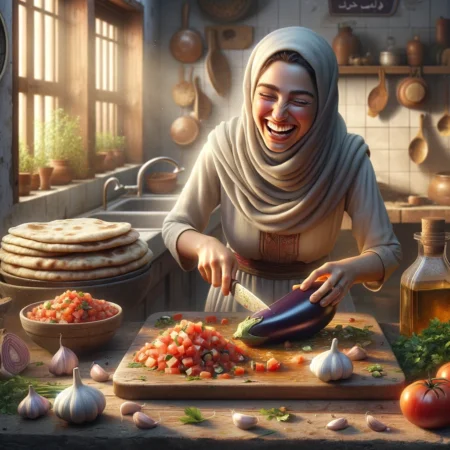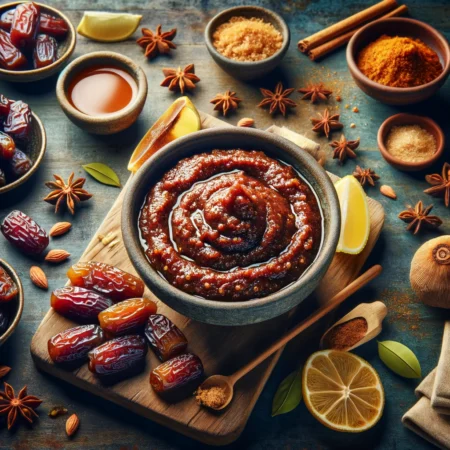In the vast tapestry of Middle Eastern cuisine, where spices are the threads that weave flavors into a rich cultural mosaic, there exists a blend so ancient and revered that it transcends mere seasoning. This is Za’atar, a symphony of herbs, sesame seeds, sumac, and salt. But our story doesn’t end with Za’atar itself; it spirals into the creation of something even more communal and beloved: the Za’atar Dip, a culinary tradition that invites sharing, dipping, and an immersive journey into the heart of Middle Eastern hospitality.
The origins of Za’atar Dip are as layered as the blend itself, rooted in ancient practices where spices were more than just flavorings; they were currency, medicine, and sacred offerings. Imagine the bustling markets of the Levant, where merchants traded spices that had traveled along the Silk Road, their aromas mingling in the air, promising culinary adventures. It was here, amidst this exchange of cultures and commodities, that the foundation for Za’atar Dip was laid.
Legend has it that the creation of the Za’atar Dip was born out of necessity and ingenuity. In a region where the climate could be as harsh as it was beautiful, preserving the bounty of the land was essential. Families would dry herbs, toast sesame seeds, and grind sumac berries, mixing them with salt to create Za’atar. This blend was then stored in large clay jars, keeping its flavors intact through the seasons.
But Za’atar was more than just a preservative. It was a staple of the communal table, a symbol of hospitality and shared meals. To transform the dry blend into a dip, olive oil was poured over a generous spoonful of Za’atar, creating a paste that could be spread over bread or dipped into with pieces torn from communal loaves. This simple act of mixing Za’atar with olive oil bridged the gap between the earth and the table, turning individual ingredients into a shared experience.
The Za’atar Dip quickly became a staple in Middle Eastern households, each family boasting its own version of the blend, handed down through generations like a closely guarded secret. Some added more sumac for tartness, others more sesame seeds for crunch, but all shared the understanding that Za’atar Dip was more than just food. It was a connection to the land, to tradition, and to each other.
As travelers from distant lands were welcomed into Middle Eastern homes, they were often greeted with a plate of Za’atar Dip and fresh bread, an offering of peace and friendship. This gesture, simple yet profound, transcended language and culture, speaking directly to the heart through the universal language of food.
In the modern era, Za’atar Dip has crossed oceans and borders, finding its way into global cuisine. It’s celebrated not only for its distinctive flavor but also for its versatility. Today, it graces tables in various forms, from a traditional dip to a modern spread for sandwiches, a seasoning for grilled meats, or even as a vibrant addition to salads.
Yet, at its core, Za’atar Dip remains a testament to the power of simple ingredients to bring people together. It invites us to gather around the table, to share stories and bread, and to partake in a tradition that has endured through the ages. In every dollop of Za’atar Dip, there lies a story of resilience, community, and the enduring appeal of the flavors of the Middle East.
So, the next time you find yourself savoring the tangy, herbal notes of Za’atar Dip, remember the journey it has taken from ancient spice routes to your table. It’s a dip that carries the essence of a region, a history of communal dining, and a reminder that, sometimes, the simplest dishes can hold the most profound stories.





